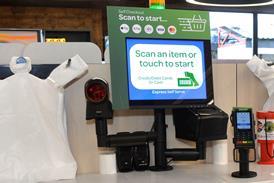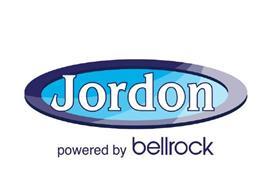The past five years have seen huge changes in the way over-the-counter (OTC) medicines are sold, meaning the traditional pharmacy need no longer be the consumer’s first port of call when they’re ill. Wider availability, more medicines being switched from pharmacy-only to the General Sales List (GSL) and government promotion of self-medication have combined to create a significant opportunity for other outlets, not least forecourts.
While the supermarkets have been making the biggest inroads in the category, healthcare is showing growth of 3% year on year in multiple forecourts, where it is currently worth £16m, according to AC Nielsen figures.
However, Trevor Davies, household trading manager for Palmer & Harvey (P&H), believes many sites have yet to fully recognise just how important the category is, particularly those that are open 24 hours.
"Forecourt retailers must realise that they are prime targets for the distress shopper, and should be able to provide an emergency service at any time of the day or night," he says.
"Most consumers have a forecourt within one or two miles of their homes and night-time problems, such as babies with high temperatures, can mean huge opportunities for those stocking a well-balanced range of healthcare products."
Quick and easy access on the move is the sector’s major advantage over the supermarkets, but some sites are just not making the most of it, says Davies. "It’s felt that the independent forecourt retailer in particular, is falling at the first hurdle when it comes to stocking shelves effectively, simply because they are not seeking assistance with shop layout."
He adds that many healthcare lines are stocked on the sides of tobacco gantries, which themselves are often owned by the supplier. "It’s in the tobacco company’s interest to make regular visits to check the display. And although the major players in the healthcare category are more than willing to provide assistance, there is no ownership of the fixture itself. This can lead to a retailer failing to maximise their display."
Reckitt Benckiser, maker of Lemsip, now also owns the Nurofen and Strepsils brands. The company also lists poor display among the ’deadly sins’ that inhibit category growth within the convenience sector. The other ’sins’ are lack of offer, habitual buying, poor ranges and the wrong SKUs.
With research showing that 79% of healthcare shoppers are actually ill at the time of purchase, a clear, logically-organised fixture is crucial. A poorly customer will not be in the mood to spend time searching for a product. Worse still, out-of-stocks will only increase their frustration. Planograms are a simple way to help retailers make sense of the fixture and are widely available from manufacturers, like Reckitt Benckiser, and distributors, including P&H and Convenience Distribution Group (CDG).
Get your range right and the average margins for OTC products are high compared to other core categories, says Richard Saunders, national account manager at Reckitt Benckiser. "Healthcare provides forecourts with an excellent opportunity to improve their overall margins," he states. "Ensuring that a core range of TV-supported brands are stocked and that availability is 100% will ensure rate of sale is maximised during the peak October to March season."
Davies, at P&H, adds that retailers should also keep their ear to the ground locally to ensure they can meet demand. "A mini epidemic can mean a very sudden surge in sales, and the retailer must be prepared," he says.
Both suppliers and manufacturers agree that forecourts must focus on big brands. These are the products customers know and trust and will deliver far greater sales and bigger margins than cheaper, non-branded lines. Brands also act as signposts to the category and brand-blocking can increase impact and help the customer to navigate the fixture.
The three major OTC categories are pain relief, cold and flu and stomach remedies.
In pain relief, Nurofen and Anadin are the top sellers for forecourts, making them obvious must-stocks. In addition to these, Saunders recommends stocking a paracetamol product. This will cover the main different active ingredients that consumers look for.
Ibuprofen, the active ingredient in Nurofen, has become increasingly popular, according to Mintel’s latest report on analgesics. This is partly due to its promotion in the treatment of sports-related injuries. Smaller pocket-size pack formats, says the report, are also proving popular and these command a higher unit price. For example, GlaxoSmithKline Consumer Healthcare’s (GSK) Panadol brand is available in a Compack pack - a tough, crush-resistant wallet pack designed to slip into a pocket or handbag. Smaller packs, such as Panadol Extra 8s are also good for additional till-point displays.
For babies with high temperatures, Calpol is the best-selling brand. A new variant, Calprofen, has been launched in a 100ml bottle, with ibuprofen the active ingredient, as opposed to paracetamol.
SEASONAL SELLERS
While a good core range should be stocked all year, many products have key sales periods.
Hayfever and allergy remedies are strong sellers in the summer, while winter sees peaks across several categories, most notably cold and flu between October and March, and over-indulgence and indigestion during the festive season.
Eric Folliot, brand manager of Resolve, made by SSL International, says the over-indulgence remedy sees double the normal rate of sale in December, which accounts for 17% of total annual sales. "The total upset stomach market witnesses an amazing 66% increase in sales in December," he says. He therefore recommends extra facings to avoid out-of-stocks and the creation of a ’recovery section’ on the fixture.
Indigestion brand Rennie, meanwhile, sees a 30% sales uplift around Christmas, and Bayer Consumer Care has recently invested £6m in relaunching the brand, which has a new ad campaign and point of sale material.
GSK also reports an uplift in sales of its Zovirax cold sore cream in the winter, and smoking cessation products see a peak that coincides with New Year’s resolutions being made. As a result, CDG will be distributing Nicotinell gum in a new portable 12-pack from January.
Cold and flu is the largest OTC category, but sales were relatively flat last winter, mainly because the season saw the lowest incidence of cold and flu for six years. However, despite the continuing unseasonally mild weather, the major manufacturers say it is impossible to predict what will happen this time around and have launched a number of new products and ad campaigns in preparation.
Reckitt Benckiser is spending £7m promoting its best-selling Lemsip brand, including sponsorship of Emmerdale until the end of January. Three new products have been launched this year. The new Lemsip Soothers hot drink comes in wild berry and hot orange flavour and contains paracetamol and a decongestant, available in packs of five or 10 (rrp £2.89 and £3.89). Breathe Easy, with added menthol, joins the Lemsip Max hot drink range (rrp £4.39). Meanwhile, New Day & Night capsules have also been added to the Lemsip Max range in a General Sales List (GSL) format, offering wider access to a product that would usually only be available from a pharmacy (rrp £3.99).
Over at GSK, Beechams latest launch is said to be particularly apt for forecourts, since it’s aimed at busy people on the move. New All-in-One Liquid Pocket Pack is a single-dose solution for cold and flu relief in easy-to-use sachets, no water required (rrp £4.99 for six sachets). The brand is backed by a £6.6m multi-media campaign, including a new TV ad.
Meanwhile, Pfizer’s cough medicine brand Benylin is expanding its profile in the cold and flu category with the launch of GSL Cold & Flu Max Strength capsules and sachets (rrp £2.99 and £3.99), supported by an £8m advertising campaign.
Sore throat remedies have seen limited growth over the past few years, according to Mintel, while medicated confectionery has seen an overall decline in value of 5% since 2000. However, forecourts seem to have bucked the trend. According to Allens & Co, the sector was one of the only channels to add value to the sore throat category last year.
Allens, known for its traditional Pine & Honey Basalm cough and cold remedy, is targeting forecourts with its relaunched lozenges range. As well as original, there is a new extra-strong variant. These are available in a 24-stick shelf-ready display tray from distributors including P&H and Spar wholesale (rrp 53p per stick).
Strepsils is described as the ’super brand’ in sore throat remedies by Mintel and takes a 47% share of the sector. Now owned by Reckitt Benckiser, it has a new dual-action, premium product - Strepsils Sore Throat & Blocked Nose (rrp £2.39).
Meanwhile, Cadbury Trebor Bassett (CTB) and Masterfoods hold more than three quarters of the medicated confectionery market between them via the Halls (CTB) and Lockets and Tunes (Masterfoods) brands. This winter, Lockets is supported by a £1m TV campaign.
CONDOMS
Condoms are another healthcare essential, but there’s debate as to how they should be displayed. While many sites stock them behind the counter, Ruth Gresty, Durex senior brand manager at SSL International, says some customers may be put off if they have to ask a sales assistant for them.
While Durex Extra Safe and Fetherlite three packs are best sellers in the convenience sector, Gestry says: "The Durex pleasure-enhancing range has shown the strongest growth sales across a number of sectors and we would recommend forecourts stock a greater variety, like Tingle and Pleasuremax, to increase sales."
TOILETRIES
Like healthcare products, toiletries will generally be a distress purchase for most forecourt shoppers. But since so many different products fall into this category it can be tricky to know what to stock.
Trevor Davies at P&H says retailers must be careful to ensure they get the most from the space available. For example, bath and pampering products should be avoided in favour of a more general range of emergency essentials, which should include toothbrushes, toothpaste, shower gel, shampoo and feminine care.
While he recommends generally sticking to unisex lines, Davies adds that many sites find that male-specific products are particularly popular. "Due to the nature of the forecourt, the potential customer base is largely male. Retailers should therefore reflect this in their displays. Featuring big name brands such as Lynx is a must," he says.
OTC MERCHENDISING
- Create distinct blocks for main OTC categories.
- Site the largest category in the premium area.
- Site best-selling lines and beacon brands in eye-level hot-spot areas.
- Allocate space in line with market share.
- Remove any slow sellers from display.
- Site related categories next to each other to stimulate interest with adjacencies.
- Where possible provide educational insight on shelf.
- Utilise point-of-sale material where available to create impact.
Source: GSK























No comments yet